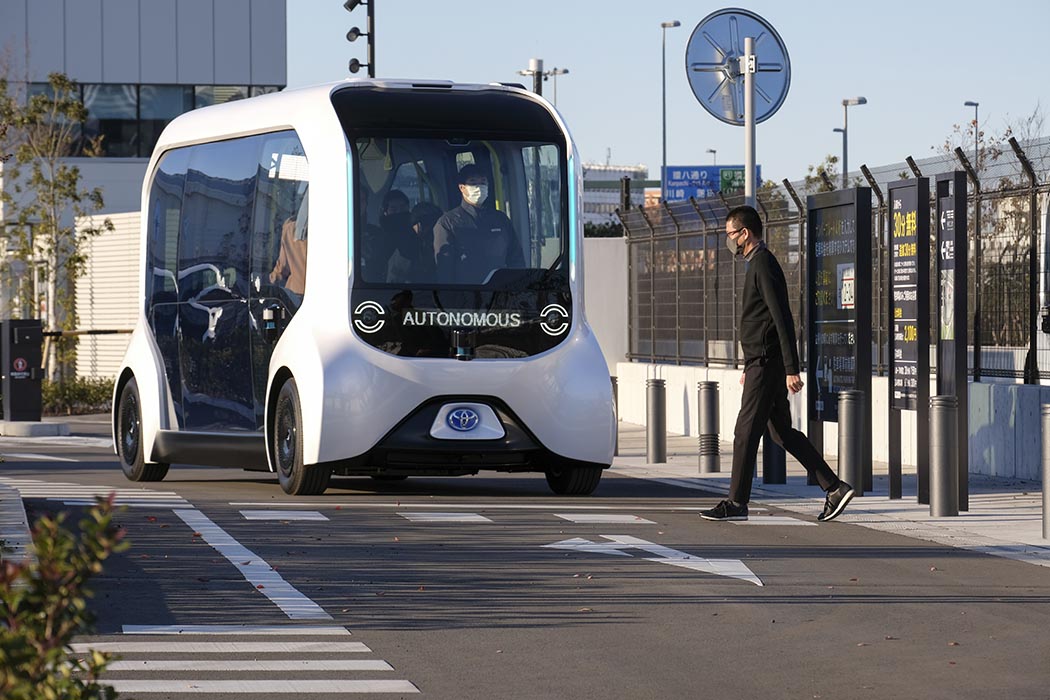
Beyond the limits of human ability
The Japanese Automobile Manufacturers Association (JAMA) is a non-profit industry association comprising Japan’s 14 manufacturers of passenger cars, trucks, buses, and motorcycles. In early 2018, JAMA released its mid- and long-term mobility vision. The vision reaffirmed the role automobiles play in enhancing people’s lives and identifies priority mobility issues to achieve future mobility in an increasingly mobile society. Desired outcomes included improving road traffic safety or ‘zero accidents’, reducing environmental burden, improvements in efficiency and accessibility, and the creation of emotional value, one aspect that is increasingly absent in the next generation of motorists.
JAMA’s vision recognises 2030 as a critical milestone in the evolution of mobility in the East Asian nation and calls for a multisectoral approach that includes input from industry, government, and academia. Proposed solutions to expedite JAMA’s lofty goals push past hardware improvement and include the use of many technologies that go “beyond the limits of human ability” such as automated driving systems, connectivity, and electrification. Mobility is no longer just about the car; it includes services as well as the product.
JAMA has confirmed it is working to enhance the social acceptance of automated driving. In 2018, the Japanese Government released an outline of measures required to create the legal frameworks for level 3 automated driving technology. A revision of the Road Traffic Act and Road Transport Vehicles Act occurred in May 2019, including amendments to allow the use of SAE level 3 self-driving technology in certain conditions. Under level 3, a vehicle’s automated driving system becomes generally responsible for conducting all of the dynamic driving tasks while the automated driving system is operational, such as accelerating past a slow-moving vehicle. But they still require human override.
These amendments are consistent with the timeline for the promotion of automated driving formulated by the Japanese government. Advancement of level 2 and level 3 automated driving technologies is planned in the early 2020s, with widespread usage predicted in the second half of the decade. The roadmap includes level 4 automated driving of passenger cars on expressways from 2025 and self-driving trucks with truck platooning on expressways in the early 2020s. The key difference between Level 3 and Level 4 automation is that Level 4 vehicles can intervene if things go wrong or there is a system failure. In this sense, these cars do not require human interaction in most circumstances. However, a human still has the option to manually override.
Truck platooning refers to the linking of two or more trucks in convoy using connectivity technology and automated driving support, a practice that can reduce carbon dioxide (CO2) emissions by up to 16% from the trailing vehicles, according to a recent study by Intelligent Transportation System organisation Ertico.
In 2009, Japan introduced a subsidy program to encourage the purchase of new eco-friendly vehicles. The incentives appear to be paying dividends, with increasing volumes of ‘next generation’ vehicles popping up throughout Japan. “The Motor Industry of Japan 2020,” a report published in August 2020 by JAMA, indicates that the share of next-generation vehicles in 2019 new passenger car registrations exceeded 39% as automobile manufacturers look to extend their range. Volumes include plugin hybrid, electric, fuel cell, clean diesel, and other new energy automobiles. The establishment of fuel and energy supply infrastructure and the ongoing provision of purchasing initiatives is necessary to continue to drive the transition to the low carbon, technologically advanced road transport, according to the JAMA report.

Updated incentives and eligibility requirements came into effect in April and May 2019. While tax incentives are intended to promote the uptake of eco-friendly vehicles and to help mitigate climate change, the JAMA report noted a heavy tax burden on many Japanese vehicles.
“The Motor Industry of Japan 2020” report highlighted a fall in Japanese motor vehicle production in 2019. A total of 9.68 million units represents a decline of 0.5% from the previous year, although this is the first production decline in three years. Passenger car production fell 0.4% to 8.33 million. Small cars witnessed the greatest decline — dropping 4.2% to 1.54 million units, while mini cars fell 1.6% (1.47 million units). Production volumes of standard cars increased by 1.2% year-on-year to 5.32 million units. Truck volumes were also in decline, to 1.23 million units (down 1.9%) in 2019, whereas bus production grew 8.3% to 123,000 units in the same period. Motorcycle production weakened 13% from the previous year to 567,000 units, with a decrease in every category.
Domestic sales of passenger cars and commercial vehicles also deteriorated. 5.2 million units represented a 1.5% decrease on 2018 volumes. A drop in domestic sales coincided with a rise in motor vehicle exports to Europe (981,000 units), Asia (652,000 units) and Africa (124,000 units). However, Japan experienced a decrease in exports to North America, the Middle East, Oceania and Latin America. Domestic motorcycle sales were also down in 2019, a total of 362,000 units represented a 1.8% decline. Motorcycle exports to the Middle East increased, whereas Japan suffered decreases in all other key regions.
The good news is that Japan’s efforts to reduce CO2 seem to be proving effective. CO2 emissions in the Pacific nation peaked in 2001 and have steadily declined since. In 2018, emissions were 1.14 billion tons, of which 19% is attributed to the transport sector. Fuel efficient passenger cars and improvements in the efficiency of goods distribution have been credited with much of the reductions. Facility generated CO2 emissions are also declining. In 2018, emissions from manufacturing facilities fell 350,000 tons from a year earlier.
Tackling climate change is no longer a “constraint” on economic growth, says Japanese Prime Minister Yoshihide Suga. In October 2020, the prime minister announced a revised target of net-zero emissions by 2050, aligning its ambitions with those of the European Union. Previously, Japan’s goal was an 80% reduction in emissions on 2010 levels, by 2050. The announcement follows a recent decision to boost offshore wind capacity and reduce its heavy reliance on inefficient coal power stations.
A key component of this net-zero emissions strategy is an acceleration of the spread of electric vehicles (EV). In December 2020, the Japanese government announced a plan to ban the sale of new gasoline- powered vehicles by the mid-2030s and replace them with EVs, including hybrid and fuel-cell vehicles. The government has targeted a reduction in the cost of vehicle batteries by more than 50% by 2030 to support EV uptake.
Previously, Toyota’s Chief Executive and Chairman of the Japan Automobile Manufacturers Association (JAMA), Akio Toyoda, had warned against banning the internal combustion engine (ICE) too quickly. Speaking at a JAMA news conference, Toyoda suggested a move to full EVs could trigger electricity shortages and indicated infrastructure upgrades of up to USD358 billion are required to support an all-electric fleet. The Toyota executive also emphasised the potential impact of a ban on Japan’s car industry, including rendering car ownership out of reach for many motorists. There is currently a significant price difference between EV and ICE vehicles in Japan.







